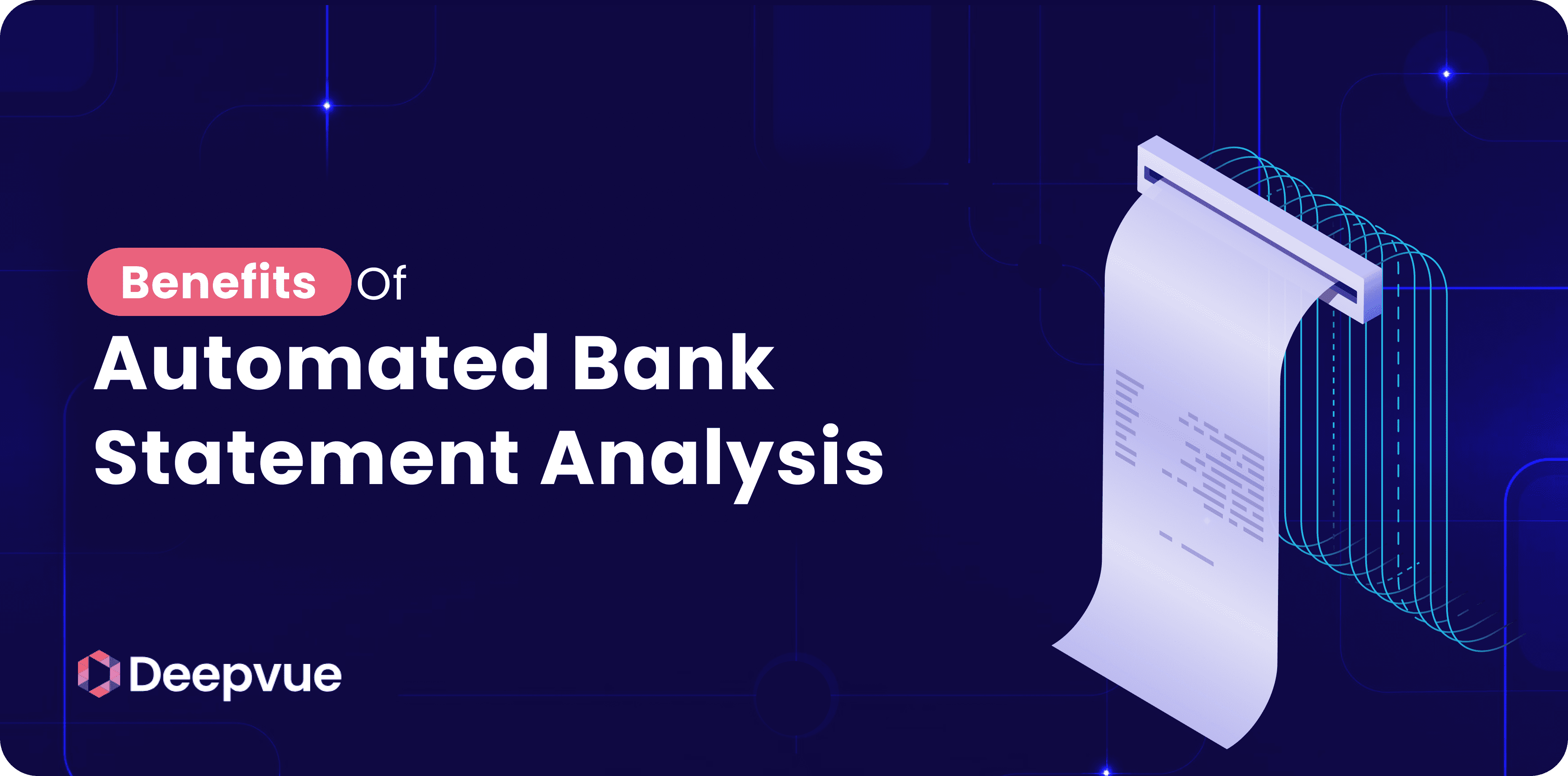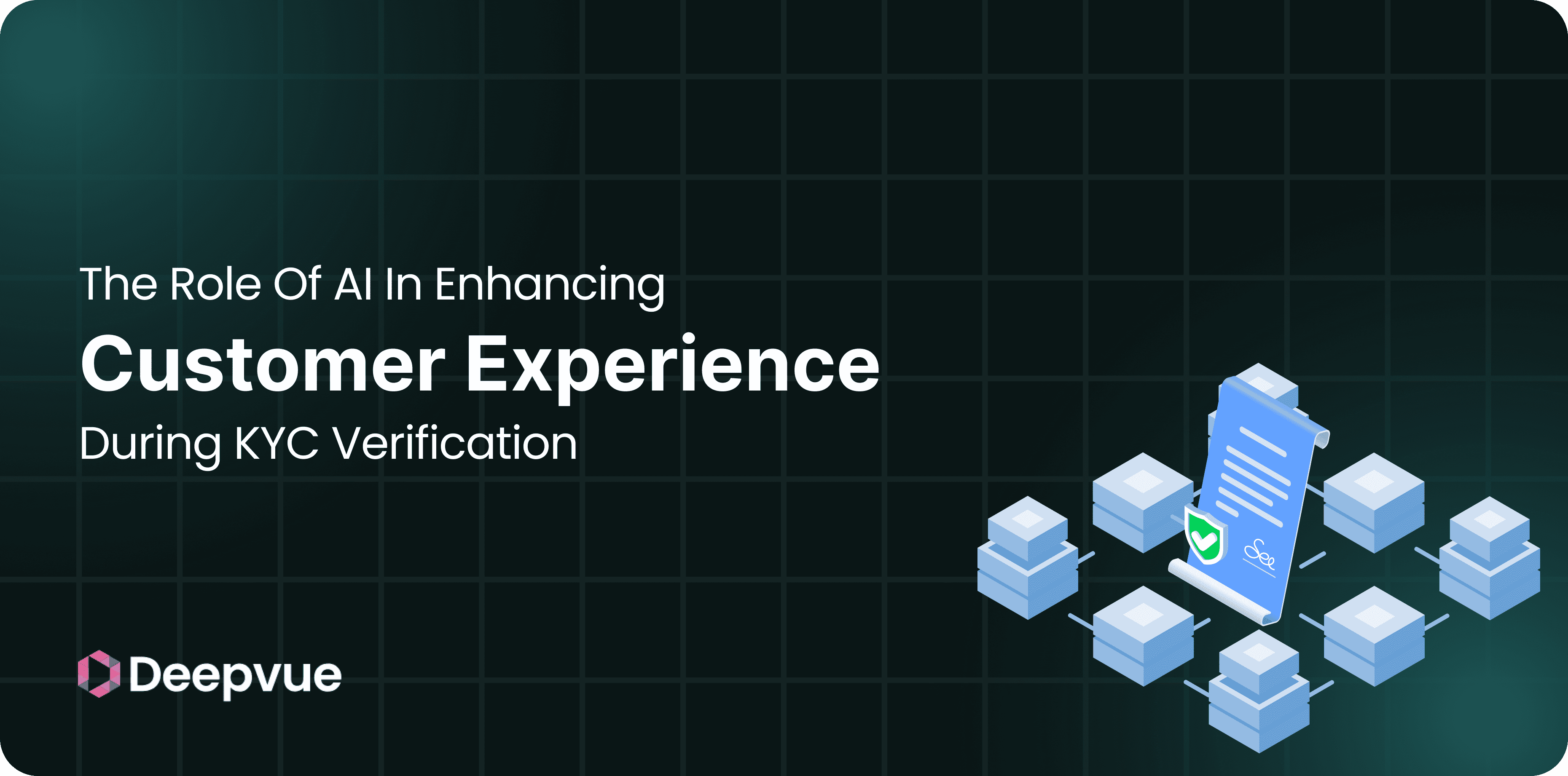Bank statements are among the most insightful records when considering a person’s financial condition. They not only inform you of how much an individual makes, but also how they spend, save, pay back loans, or react under financial pressure. For lenders, underwriters, and risk managers, bank statements are a treasure trove of information. But there’s a twist — provided you can read them quickly, correctly, and in bulk.
Manual bank statement analysis is slow, subjective, and difficult to scale. It is labor-intensive and susceptible to inconsistencies. Automated bank statement analysis changes this historically time-consuming process to high-speed, high-accuracy decision-making that provides richer insights and quicker decisions.
What is Automated Bank Statement Analysis?
Automated bank statement analysis refers to the application of technology — such as OCR (Optical Character Recognition), machine learning, and rule-based engines — to pull, read, and classify data from bank statements.
Whether the data arrives as PDFs, scanned images, or direct API tugs (such as through India’s Account Aggregator framework), these systems work with the information to provide structured insights: spending behaviors, income sources, EMIs, FOIR, balance direction, and possible risk flags.
It’s not merely reading transactions. It’s reading the borrower from their financial behavior, and doing so within seconds.
Speed and Scale
Time is a competitive edge in lending. The faster you process applications, the more customers you can serve. Manual statement analysis can take up to 30–60 minutes per customer file, depending on complexity. Multiply that by thousands of applications, and you’re looking at major bottlenecks.
Automated systems, on the other hand, can process statements in under a minute, regardless of volume. Whether you’re underwriting one borrower or a thousand, the turnaround time remains the same. This kind of scalability is crucial for lenders trying to meet aggressive disbursal targets or manage surge volumes during loan seasons.
Automation doesn’t just save time; it unlocks speed at scale.
Accuracy and Standardization
Manual checks of bank statements are prone to human error. A transaction gets classified differently by one analyst from another. Salary credits get overlooked. EMIs get double-counted. And discrepancies creep in.
Automation addresses this by using the same reasoning each time. After training or setup, automated solutions always:
- Identify salary credits (even with different naming conventions)
- Gather and categorize EMIs
- Flag bounced transactions
- Trend spending into normal buckets such as utilities, food, travel, or discretionary
The result? Clean, consistent, and reliable data. Which means better underwriting decisions.
Richer and Deeper Financial Insights
One of the biggest misconceptions is that bank statement analysis is just about income verification. That’s barely scratching the surface.
Automated systems dive deeper:
- Salary irregularities: Was the salary delayed this month? Has the employer changed?
- FOIR calculations: Is the borrower over-leveraged? Is he paying EMIs that are higher than his income can sustain?
- End-of-month balances: Is the account running out of money every month before the next salary?
- Credit blackout periods: Has the account experienced no credits for more than 30 days?
- Discretionary spending: Is he spending large amounts on shopping or travel after the EMI has been missed?
Related Read: 7 Alerts Every Lending Ops Team Should Monitor
These indicators are important for risk evaluation, and automated software can pick them up instantly — something that could take hours to do manually.
Enhanced Risk Detection
One of the most valuable uses of automated bank statement analysis is in early warning systems (EWS). Credit risk doesn’t appear out of nowhere. It shows up quietly in how a borrower manages their money.
With automation, you can track:
- Declining salary trends over time
- A spike in credit card bill payments
- Repeated wallet top-ups (often a sign of low liquidity)
- EMI bounce patterns
- Disappearance of salary credits altogether
These are early signals that someone is heading toward financial distress. Spotting them early gives lenders a chance to intervene before the default happens — either through restructuring, reminders, or alternate repayment plans.
Related Read: 5 Borrower Behaviors That Predict Default Before It Happens
Improved Customer Experience
From the borrower’s point of view, there’s nothing worse than waiting days for a decision. Bundling physical documents or PDF exchange through email slows down disbursal and raises drop-offs.
With automation, borrowers are able to:
- Directly upload bank statements
- Or provide access through Account Aggregator within seconds
- Receive instant credit approvals or pre-approved offers
- This lessens frictions in the process, particularly for salaried customers or self-employed experts who need quick, unsecured credit.
Quicker approvals equal happier borrowers — and improved conversion rates.
Regulatory and Compliance Alignment
Regulators are increasingly demanding transparency, audit trails, and fair lending. Automated analysis serves these expectations by:
- Keeping clear records of how the data was processed
- Making available digital footprints for audit and compliance verification
- Maintaining consistency in risk assessment among similar customer profiles
Consistency is essential in high-volume lending settings to prevent legal traps and maintain regulatory confidence.
Use Cases Across the Lending Lifecycle
Pre-Sanction Risk Assessment
Automation assists underwriters in reviewing an applicant’s repayment ability, recognizing risky cash flow trends, and identifying income borrowing (briefly credited money to fictitious income indications).
Post-Disbursal Monitoring
Several defaults can be avoided with early interventions. Automation can alert customers who are experiencing early signs of financial difficulties, including delayed salaries, dwindling balances, or missed EMI payments.
Collections and Recovery
In cases of delinquency, updated bank statements can help assess whether the borrower can repay now. Automated analysis can immediately check if new credits or inflows have been re-established, allowing for more intelligent collection tactics.
Business Impact
The benefits of automation are not merely operational — they are strategic.
- Lower Operational Costs: Less time and manpower spent per application → more cost-effective loan processing.
- Higher Approval Speeds: Quick assessments mean faster “yes” decisions, leading to better customer satisfaction and improved conversion rates.
- Better Risk Outcomes: Clean, structured data feeds into stronger credit models, which leads to healthier portfolios and fewer surprises post-disbursement.
Why Manual Analysis Falls Short?
No matter how skilled, human analysts have limitations. Fatigue, inconsistency, subjectivity — these are all risks that automation eliminates. Moreover, the ability to track trends over time, catch subtle anomalies, and scale analysis across geographies and formats is simply not possible manually.
Choosing the Right Automated Tool
When selecting a bank statement analysis solution, consider:
- Accuracy of parsing and OCR
- Support for multiple file formats
- Classification and categorization logic
- Ability to detect financial stress indicators
Integration with Account Aggregator or bank APIs
- Custom rule engine for EWS flags
- Outputs like FOIR, EOM balances, and EMI trendlines
- The best tools don’t just process data — they transform it into risk intelligence.
Conclusion
Automated bank statement analysis is no longer a back-office tool — it’s a strategic enabler for digital lending. Whether you’re trying to speed up onboarding, catch early signs of default, or just improve customer experience, automation delivers.
For lenders, the question is no longer if they should automate, but how fast they can implement it.
FAQs
What is automated bank statement analysis?
It is a technology-based process that captures and interprets bank statement data to deliver financial information for credit decision-making.
How accurate is automated analysis compared to manual review?
Automated tools offer higher consistency and lower error rates than manual review, especially for large volumes of data
What types of insights can it generate?
It can extract salary patterns, EMI behaviors, spending categories, financial stress signals, and FOIR calculations.
How fast can automated systems process a bank statement?
Most systems complete analysis in under a minute, significantly faster than the 30–60 minutes it takes manually.
Is it secure to share bank statements for automated analysis?
Yes, if the platform complies with data protection standards and uses secure channels like Account Aggregator.




